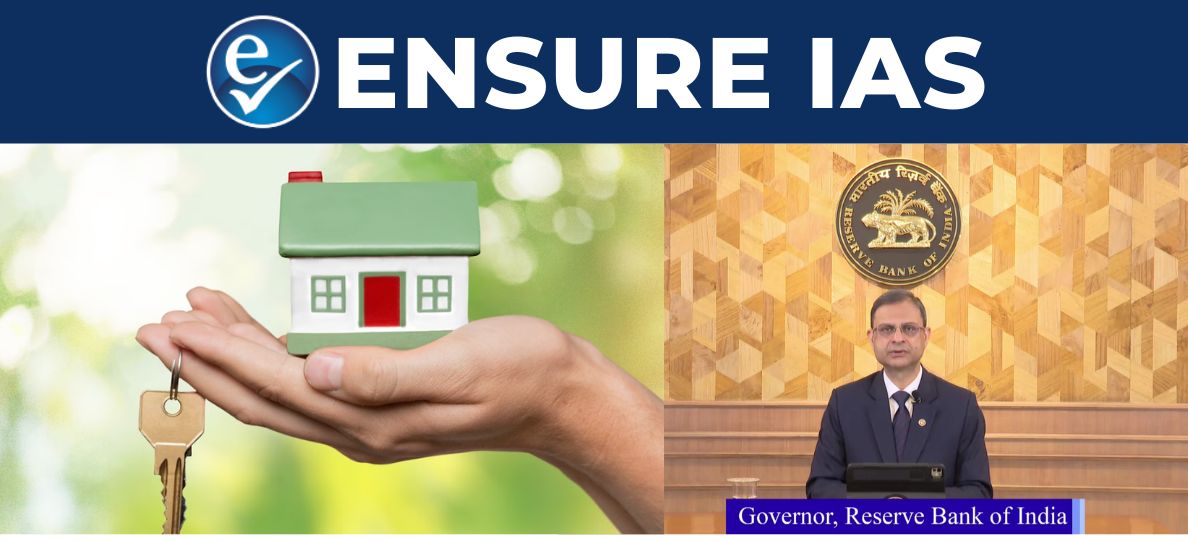- Courses
- GS Full Course 1 Year
- GS Full Course 2 Year
- GS Full Course 3 Year
- GS Full Course Till Selection
- Answer Alpha: Mains 2025 Mentorship
- MEP (Mains Enrichment Programme) Data, Facts
- Essay Target – 150+ Marks
- Online Program
- GS Recorded Course
- Polity
- Geography
- Economy
- Ancient, Medieval and Art & Culture AMAC
- Modern India, Post Independence & World History
- Environment
- Governance
- Science & Technology
- International Relations and Internal Security
- Disaster Management
- Ethics
- NCERT Current Affairs
- Indian Society and Social Issue
- NCERT- Science and Technology
- NCERT - Geography
- NCERT - Ancient History
- NCERT- World History
- NCERT Modern History
- CSAT
- 5 LAYERED ARJUNA Mentorship
- Public Administration Optional
- ABOUT US
- OUR TOPPERS
- TEST SERIES
- FREE STUDY MATERIAL
- VIDEOS
- CONTACT US
First Repo Rate Cut In 5 Years: RBI MPC Meeting
First Repo Rate Cut In 5 Years: RBI MPC Meeting
09-02-2025

- The Reserve Bank of India (RBI) reduced the repo rate by 25 basis points (0.25%) to 6.25% on February 7, 2025.
- The repo rate was previously at 6.5%.
- This is the first repo rate cut in five years, with the previous reduction being in May 2020.
- The decision was made by the Monetary Policy Committee (MPC), with all members agreeing on the move.
- Objective: To stimulate economic growth by making borrowing cheaper, thus encouraging spending and investment.
- While the repo rate was reduced, the RBI maintained its neutral stance.
- The neutral stance allows flexibility to respond to evolving macroeconomic conditions and remains focused on both growth and inflation.
|
GDP Growth Projections:
- The RBI estimates a GDP growth of 6.7% for the fiscal year 2025-26.
- The government's Economic Survey projects a similar growth range of 6.3%-6.8% for FY26, showing factors like strong external accounts and stable private consumption.
- India’s current fiscal year (2024-25) is expected to grow at 6.4%, the slowest rate in 4 years.
Inflation Outlook:
- RBI projected retail inflation to be 4.2% in FY26, with a quarterly breakdown:
- Q1: 4.5%
- Q2: 4%
- Q3: 3.8%
- Q4: 4.2%
- For 2024-25, the inflation forecast remains 4.8%.
- CPI inflation for December 2024 came in at 5.22%, marking a decline from 5.48% in November 2024.
- The MPC noted that inflation is moderating, supported by a favorable food outlook and past monetary policy actions.
|
Impact of Repo Rate Cut:
- Loan EMIs: The reduction in repo rate will lower Equated Monthly Installments (EMIs) for borrowers as lending rates linked to the repo rate decrease.
- Lenders might also adjust interest rates on loans linked to MCLR (Marginal Cost of Funds-based Lending Rate).
-
- MCLR: The minimum interest rate that a bank can lend at, based on the marginal cost of funds and other factors.
Cyber Fraud Prevention Measures:
- Given the increasing digitalisation of financial services, the RBI is taking steps to curb cyber frauds:
- Additional authentication for online international payments to offshore merchants.
- Implementation of “.bank.in” domains for Indian banks and “.fin.in” for the rest of the financial sector to enhance digital security.
Forex Market and Exchange Rate Policy:
- The RBI clarified its position on the forex market:
-
- The market where currencies are traded. It is the largest and most liquid market in the world.
- The Indian rupee's exchange rate is determined by market forces, and the RBI intervenes only to smoothen excessive volatility.
-
- The value of one currency in terms of another currency. It determines the rate at which one currency can be exchanged for another.
- RBI's intervention in the forex market aims to stabilize the rupee, not to target any specific exchange rate level.
Global Economic Outlook:
- Global growth is currently below historic averages, with rising concerns over services price inflation stalling global disinflation.
- The US dollar has strengthened, and emerging market economies are experiencing capital outflows and currency depreciation.
-
- The movement of financial assets out of a country, often due to economic or political instability.
- Global risks: Geopolitical tensions, trade uncertainties, and the diverging monetary policies of advanced economies are exacerbating financial market volatility.
What is the Monetary Policy Committee (MPC)?The Monetary Policy Committee (MPC) is a 6-member body responsible for setting India's monetary policy. Its primary objective is to maintain price stability while keeping in mind the objective of growth.
|
|
Also Read |
|
| Public Administration Optional | |
| UPSC Monthly Magazine | Question Answer Practice For UPSC |




